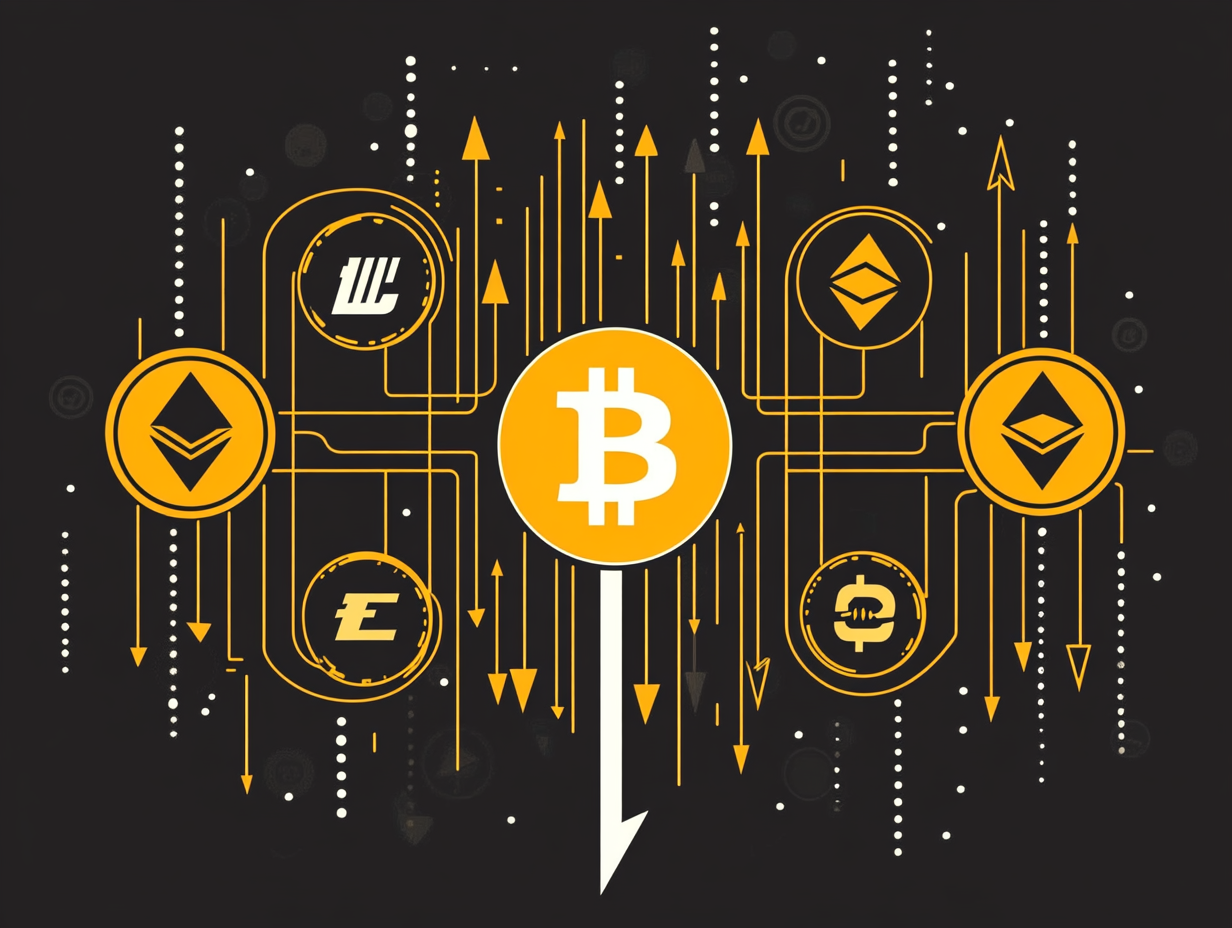The Rise of Flash Loans: Exploring Instant Lending in DeFi

Flash loans represent a groundbreaking concept within decentralized finance (DeFi). They allow individuals to borrow without collateral, and repayment must occur within the same blockchain transaction. If the loan is not repaid within the same transaction, the blockchain automatically rolls back the entire process, ensuring no partial or incomplete actions occur.
The Atomic Nature of Blockchain Transactions
The breakthrough of flash loans is rooted in the atomic characteristics of blockchain technology. This guarantees that transactions are either completely finished or wholly reversed. This characteristic allows uncollateralized loans to thrive in the DeFi sector, unlike conventional loans. Platforms such as Aave pioneered these immediate loans, with other DeFi platforms like Uniswap or Balancer offering related functionalities.
How Do Flash Loans Work?
Flash loans operate through smart contracts, which are automated programs that enforce established rules on the Ethereum blockchain or similar networks. Here’s a streamlined procedure:
- Borrowing From a Liquidity Pool
Borrowers seek borrowed capital from a liquidity pool that is supplied by liquidity providers. These providers receive an interest fee for the funds they add to the pool. - Execution of the Loan Contract
After obtaining the borrowed funds, the borrower can utilize them for particular objectives like arbitrage opportunities, collateral swaps, or refinancing debt, and ensure full repayment within the same transaction. - Repayment at the End of the Transaction
The borrower settles the loan amount, which includes the interest fee, within the same Ethereum transaction block. If the repayment terms are not fulfilled, the entire transaction is voided, and all actions go unrecorded on the blockchain.
Example Use Case: Flash Loan Arbitrage
One of the most frequent uses of flash loans is in arbitrage trading. Imagine a situation in which the cost of a token varies across two decentralized exchanges (DEXs):
- Exchange A offers a token at a price lower than Exchange B.
- A trader takes a flash loan of 1,000 DAI to buy the token on Exchange A.
- The trader subsequently sells the token at a greater price on Exchange B, pays back the flash loan, and retains the profit—all in one blockchain transaction.
This method illustrates how flash loans allow users to take advantage of price differences between various markets.
Advantages of Flash Loans

Speed and Efficiency
Flash loans operate entirely within one blockchain transaction, making them ideal for situations such as flash loan arbitrage, where any delays could result in lost profits
No Collateral Needed
In contrast to conventional financial systems, flash loans do not necessitate borrowers to present collateral upfront. Conversely, smart contracts ensure repayment, allowing this loan type to be available to users with minimal capital.
Versatility in Use Cases
Flash loans can be utilized for:
- Debt Refinancing: Settling high-interest debts with better terms.
- Collateral Swaps: Modifying collateral without selling off assets.
- Testing DeFi Solutions: Developers use flash loans to evaluate strategies or create new DeFi protocols.
Risks of Flash Loans
Although flash loans provide thrilling opportunities, they also carry significant risks:

Smart Contract Vulnerabilities
Flash loans are completely controlled by smart contracts. Flaws or vulnerabilities in the loan contract can lead to financial losses or misuse. Using thoroughly audited platforms like Aave and dYdX is essential for reducing any potential risks.
Flash Loan Attacks
Malicious individuals have taken advantage of flash loans to alter price oracles and exploit DeFi platforms. Such exploits can lead to unjust gains for attackers and disrupt the DeFi ecosystem.
Complexity and Technical Knowledge
Flash loans require a deep understanding of blockchain mechanisms and technical expertise. Errors like not completing repayment by the end of the transaction can lead to wasted gas fees and unsuccessful operations.
Here's a quick comparison of the advantages and disadvantages of flash loans to help you understand better:
| Advantages | Disadvantages |
|---|---|
| Speed and Efficiency | Smart Contract Vulnerabilities |
| No Collateral Needed | Flash Loan Attacks |
| Versatility | Complexity |
| Low Risk for Lenders | Potential Failed Transactions |
Conclusion: Why Flash Loans Matter in the DeFi Landscape
Flash loans signify a major advancement in decentralized finance, providing an opportunity to obtain borrowed funds without the need for collateral in a single transaction. They have opened up opportunities such as crypto flash loan arbitrage, optimizing liquidity pools, and building DeFi ecosystems that were unimaginable in conventional finance.
However, users must approach flash loans with caution. Risks such as flash loan exploits, market volatility, and smart contract vulnerabilities highlight the need for thorough research and responsible use. Platforms like Aave and dYdX remain the gold standard for those looking to explore this powerful tool.
By staying informed, refining strategies, and leveraging trusted DeFi platforms, users can unlock the full potential of flash loans in the crypto space.
Frequently Asked Questions
What are flash loans in DeFi?
Flash loans are a type of uncollateralized loan in decentralized finance (DeFi) that allows users to borrow funds without providing collateral, as long as the loan is repaid within the same blockchain transaction.
Are flash loans taxable?
In many jurisdictions, any profits made from flash loans, such as those from arbitrage trading, may be considered a taxable event. Consult a tax professional to understand your obligations related to crypto tax laws.
Can beginners use flash loans?
While beginners can theoretically use flash loans, they require technical knowledge and familiarity with the DeFi ecosystem. Mistakes can result in failed transactions and wasted gas fees, so it’s advisable for newcomers to start with simpler DeFi applications.
How are flash loans different from traditional loans?
Flash loans differ from traditional finance in several ways:
- No collateral required: Flash loans use smart contracts to guarantee repayment, unlike traditional loans that require collateral upfront.
- Instant execution: The entire loan cycle—borrowing, using, and repaying—happens within a single blockchain transaction.
- Atomic structure: Transactions are either fully completed or reverted, eliminating lender risk.


Comments ()